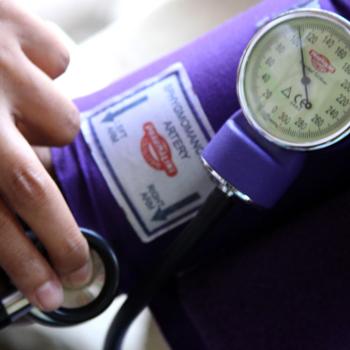
You’re not feeling well, so you make an appointment to see your doctor. You go in, the doctor asks the details of your symptoms and does a physical exam. They may order blood work, imaging, or other testing. After gathering all the data, they tell you what to do to help you feel better. Most likely, you expect a medication to help you feel better.
Everyone is familiar with certain types of treatments for certain things. If you break a bone, someone will set it back into place and put a cast on it. If you have a deep cut, someone will stitch it closed. If you have strep throat, you’ll receive an antibiotic. The list goes on.
What most people do not realize is that healthcare professionals- doctors, nurse practitioners, physician’s assistants, and nurses all have detailed treatment plans for you, including ones to keep you healthy.
Treatment Plans
Due to the complexities of the human body, medicine and our knowledge of what is normal and how to treat the abnormal, has grown vast and complicated. Every part of your body is linked to and influences every other part.

A standard treatment plan will contain information from head to toe and everything in between. Anything that can influence the diagnoses, either positively or negatively, is in there. Details and the ability to have measurable outcomes are important to have.
Anatomy of a Treatment Plan
Diagnoses
Healthcare has developed diagnoses that take all the information a patient is presenting with and pinpoint a cause. There are thousands of diagnoses.
- High blood pressure
- Strep Throat
- Depression
- Breast Lump
- Small Cell Lung Cancer
- Laceration
- Failure to Thrive
- Upper Respiratory Infection
- Heart Attack
- Kidney Stones
Because of the number of diagnoses, standardized treatment plans have been created. This way, your provider doesn’t have to invent one from scratch. Instead, they can take the standard plan and adjust it to fit you.
Goal of Care
This is the outcome of the treatment plan. Often this goal is based on the patient improving and getting better. For chronic diseases, the goal will focus more on at least maintaining a patient’s current level of health. Goals may be broken down into small, measurable steps.
Even with chronic conditions, a patient’s health can be improved. Unfortunately, it cannot be completely returned to not having the disease anymore.
Medical Intervention
This section details what the healthcare provider will do to help the patient reach the treatment plan’s goals. This will include medications, therapies, surgeries, referrals to specialists, and anything else medically needed. Some providers will also include the health risks and benefits of each treatment available.
Patient To-Dos
Along with what the medical community will do to help the patient reach their goals, is a list of things the patient needs to do for their part. This includes items such as:
- Taking medications
- Going to appointments
- Changes in their diet
- Changes in habits – getting rid of bad ones and adding in good ones
Using a Treatment Plan
Once the first treatment plan is made, you move forward with it. You head toward the goals made by doing the actionable steps listed. As the patient progresses, the plan is revisited and revised as needed to reflect those changes.
For short-term treatment plans, such as for someone with an infection like the flu, the plan will be short. It will also end quickly, once the patient recovers. With chronic illnesses, the treatment plan will be long-term and can become very intricate.
Why should you care about Treatment Plans?
You may be asking yourself, this is nice but why do I need to know this information? In my time as a nurse, I have noticed a growing trend. In 1914, informed consent became a law regarding a patient’s autonomy. A doctor could not make medical decisions for the patient without the patient’s knowledge. The patient needed to know what was wrong with them, the options for treatment, the risks and benefits of those treatments, and then decide what treatments they wanted to try.

In practice, this was not always done. For many years after this ruling, doctors still made decisions for their patients. Since then, the healthcare community has improved and does its best to let patients make their own decisions and then abide by them.
Informed consent is different than HIPAA, I will discuss HIPAA in a later article.
Patients have become partners with their healthcare providers in the guarding of their health. But, many patients still believe all the work is on those providers and the medicines prescribed. Medications are not a miracle pill, neither is surgery. You have to do your part.
The Patient’s Part
Part of the treatment plan is what the patient will do to help themselves feel better. These may include taking medications, having surgery, or going to therapy. They also include lifestyle changes that need to be made or things to do at home to make yourself feel better.
When a patient is diagnosed with Covid, I give them information on Covid, including how to take care of themselves at home. Drink plenty of fluid, get extra rest, take over-the-counter medications to treat their symptoms, use a humidifier, etc.
The same is true no matter what you are diagnosed with. If you are diagnosed with diabetes, you are encouraged to exercise more, monitor what you eat, and take care of your feet. These lifestyle things prevent diabetes from progressing and damaging the body. No amount of medication will help, if you continue to live in the way that caused the diabetes to develop.
Conclusion
Treatment plans are used by healthcare professionals to guide patients back to the best health they can be in. They include details on diagnosis and what steps are needed on both the provider’s and patient’s part to reach optimal health.
Understanding treatment plans will aid you in making wise decisions on your health.














